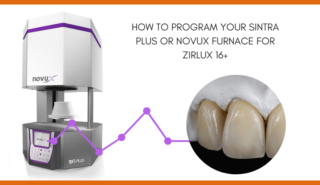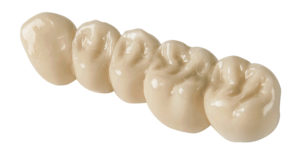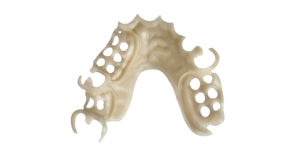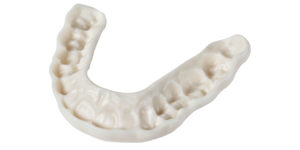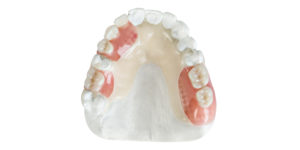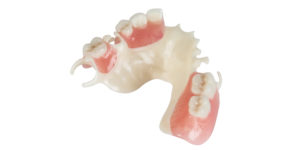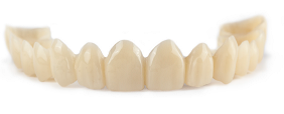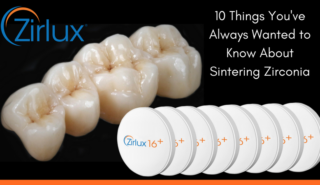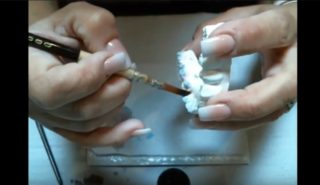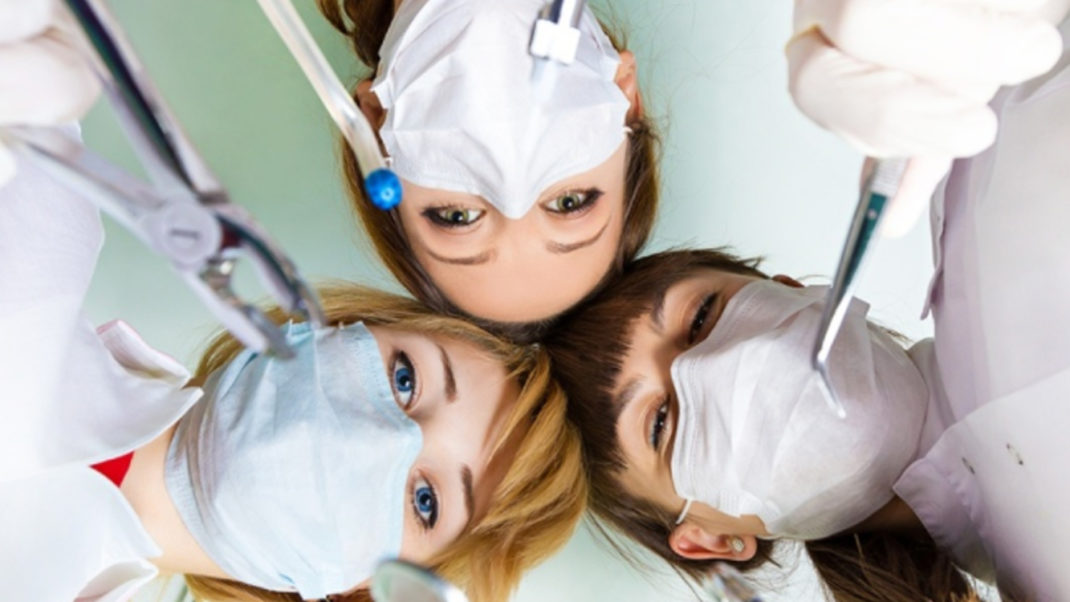
Do you have a missing or cracked tooth? Have you had tooth decay over the years? Are you just unhappy with your smile? You may be wondering what your options are. Dentist lingo can be difficult to decipher, especially if you were just told you need to have some type of application or procedure and you’re already overwhelmed. We made it simple for you by putting together this overview of three different categories of appliances your dentist may prescribe.
Removables
Removables are dental restorations that you can take out of your mouth when you don’t have a need for using them. You probably think of dentures when you hear removables, but traditional dentures aren’t your only option in this day and age. This type of dental restoration is noninvasive and does not require surgical incisions or any sort of recovery. They are supported by surrounding tissues in the oral cavity. If you’re missing some of your teeth, you may opt for a partial denture, where the denture is latched onto your remaining teeth to fill the gaps. You can opt for this option if the idea of implant surgery is scary or too expensive. Removables are also prescribed when one needs a night guard or bite splint. Cosmetic smile enhancers, which are an alternative to permanent veneers for those who want a less expensive and still esthetically pleasing option for enhancing his or her smile, is also a removable appliance and can be worn only when wanted.
Why choose Zirlux Acetal?
Zirlux Acetal is esthetic and natural looking because it eliminates silver clasps in otherwise traditional removable appliances by replacing them with a natural-looking tooth-colored clasp. These clasps also hook on to the tooth instead of the gum tissue, which is more comfortable than a traditional clasping procedure. Zirlux Acetal is prescribed for removable partial denture frameworks, bite splints or nightguards, cosmetic smile enhancers, and provisional crowns and bridges.
Temporaries
Temporary restorations are used while you are waiting for your finished restoration to be completed by the dental lab. They protect the teeth that have been prepared for the final restoration. Temporaries also allow you to test drive your new smile. You can decide if it’s the right size, shape, color, and feel for you, and discuss any concerns with your dentist—saving time and money by helping to eliminate the need for additional adjustments and remakes after your restoration is completed.
Zirlux Temp Multi and Zirlux Temp are an esthetic solution for temporary restorations. These materials can match any tooth color and can be used in a wide range of dental cases. They can be worn up to 6 months.
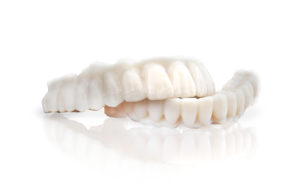
Zirconia
Have you been told you need an implant, bridge, crown, coping, or a full arch? Zirconia is a more esthetic and natural looking, and long-lasting material for you to consider compared to other materials like porcelain-fused-to-metal restorations. Its high strength makes it resistant to chipping, cracking, and breaking, and can last up to 10 years—or in some instances, a lifetime— thanks to its resistance to corrosion. Plus, its biocompatibility means you don’t need to worry about having allergic reactions to the material.
Zirlux Anterior Multi
Zirlux Anterior Multi is perfect for replacing or repairing teeth in the anterior region (the teeth people see when you smile) because it matches the natural gradient shading and translucency of your natural teeth. Zirlux Anterior Multi is also stronger than Lithium Disilicate, an alternate dental material. You can consider Zirlux Anterior Multi for anterior crowns, posterior crowns, 2-3 unit bridges, telescopic crowns, and veneers.
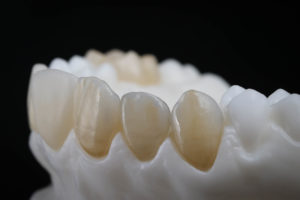
Zirlux 16+
Zirlux 16+ can match any tooth shade and offers high translucency and strength for copings, multi-unit bridges, full-contour crowns, implant abutments, and full arch or hybrid bridges.
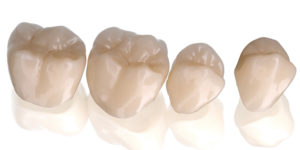
Zirlux FC2
Zirlux FC2 is highly translucent and highly esthetic, and causes less abrasion and wear to your opposing teeth compared to traditional PFM (porcelain fused to metal) restorations. Zirlux FC2 can be prescribed for copings, multi-unit framework, multi-unit bridges, full-contour bridges, inlays or onlays, implant abutments, and full arch or hybrid bridges.
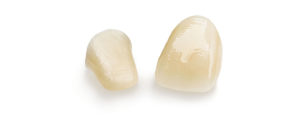
We hope that this clears up any confusion or questions you have at your next dental appointment! Of course, if you ever had any questions, you can contact us here and we’d be happy to help!
